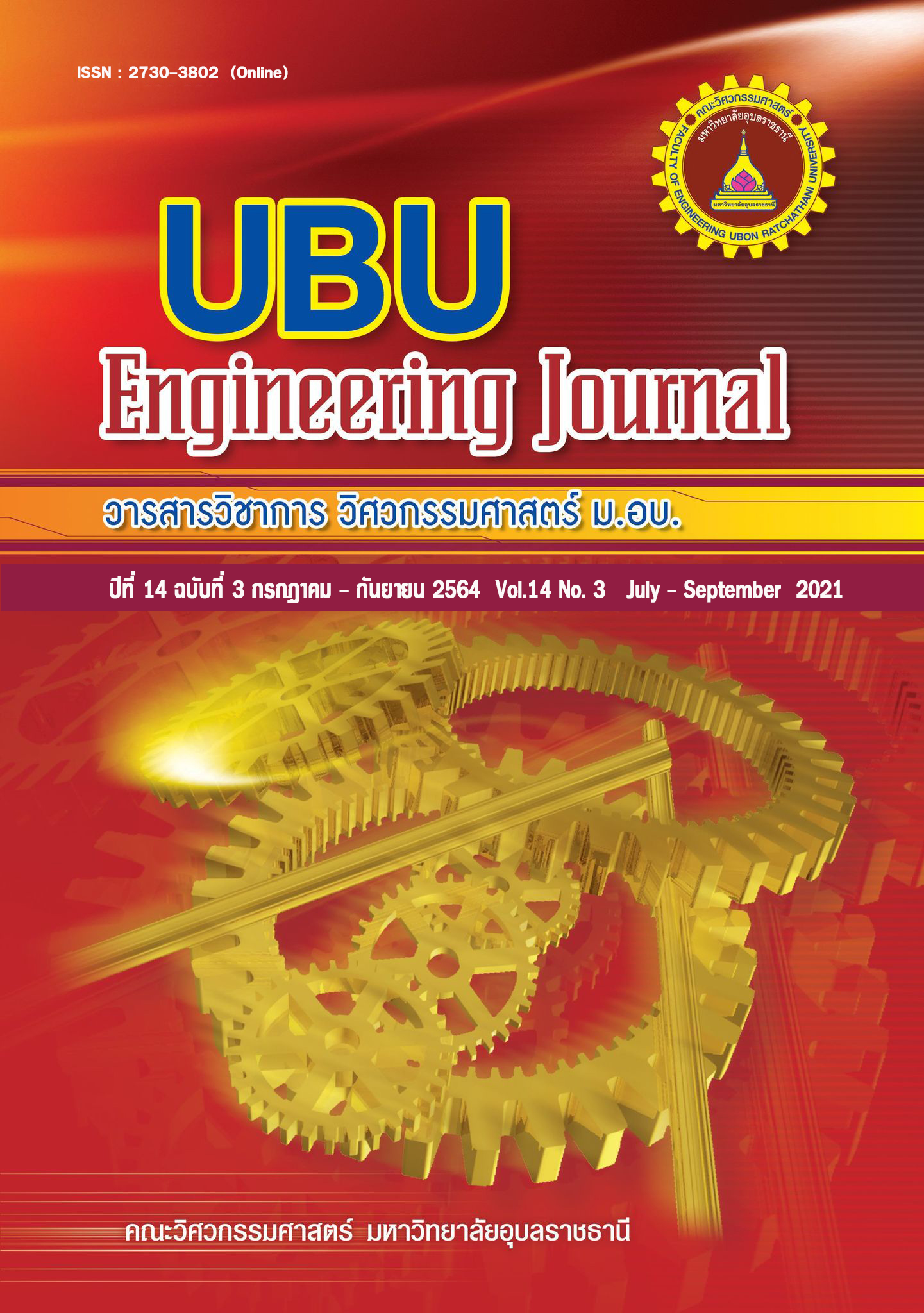Effects of foaming agent types on air void size of Cellular Lightweight Concrete
Main Article Content
Abstract
Cellular lightweight concrete is produced by uniform distribution of air bubbles made from preformed foam throughout the mass of concrete in substitution of coarse aggregates. The properties of cellular lightweight concrete are depended on density or foam volume, when the concrete hardens was to become pore system inside. That, it is a very significant characteristic affects to strength, durability and thermal conductivity. This paper presents the effect of foaming agent types to air void size of cellular lightweight concrete with a wet density of 1,800 kg/m3 using sand to cement ratios of 2:1 and water to cement ratios of 0.45. At this density, the concrete specimens were used three types of foaming agent and used three different foaming agents to water ratios of 1:20, 1:30 and 1:40. To producing preformed foam by foam generator used pressure at 5.50 kg/cm2 and the concrete specimens were used air dry curing method for 28 days. It was found that median air void sizes are mainly in the range of 50-450 microns. Foaming agent A was found median air void sizes between 50-250 microns, foaming agent B was median air void sizes between 50-450 microns and foaming agent C was median air void sizes between 100-450 microns. Although, foaming agents used the same process to produce preformed foam but it’s caused to make a difference on air void sizes. That’s depend on performance of foaming agents, in addition the different foaming agents to water ratios has impacted on air void sizes and air void size distributions that effects on compressive strength of cellular lightweight concrete. Thus, before using foaming agents to produce should be test for finding proportion foaming agents.
Article Details
References
[2] ชัชวาลย์ เศรษฐบุตร. คอนกรีตเทคโนโลยี. พิมพ์ครั้งที่ 8. กรุงเทพฯ : คอนกรีตผสมเสร็จซีแพค, 2543.
[3] Kumar NV, Arunkumar C, Senthil SS. Experimental Study on Mechanical and Thermal Behavior of Foamed Concrete. Materials Today: Proceeding. 2018;5: 8753-8760.
[4] Neville, AM.. Properties of Concrete. 5th ed. London: Pearson Education; 2011.
[5] Just A, Middendorf B. Microstructure of high-strength foam concrete. Materials Characterization. 2009;60(7): 741-748.
[6] Hilal AA. Properties and Microstructure of Pre-formed Foamed Concrete. Thesis for the degree of Doctor of Philosophy, Department of Civil Engineering University of Nottingham; 2015.
[7] ธนภร ทวีวุฒิ, นท แสงเทียน, วิวัฒน์ พัวทัศนานนท์, สถาพร โภคา. ผลของความหนาแน่น และอัตราส่วนที่มี ต่อปริมาณช่องว่างอากาศในคอนกรีตมวลเบาแบบ เซลลูล่าที่ใส่สารลดน้ำปริมาณมาก. วารสารวิชาการ วิศวกรรมศาสตร์ มหาวิทยาลัยอุบลราชธานี. 2561;11(2): 1-11.
[8] Nambiar EKK, Ramamurthy K. Air-void characterization of foam concrete. Cement and Concrete Research. 2007;37(2): 221-230.
[9] Abiev RS, Kozlov VV. Investigation of foam concrete properties, produced by means of Vortex Jet Apparatus. New Materials, Compounds and Applications. 2018;2(1): 71-80.
[10] อภัย ชาภิรมย์. การพัฒนากำลังคอนกรีตเซลลูล่าด้วยเถ้า ถ่านหินและเส้นใยสังเคราะห์. วิทยานิพนธ์ วิศวกรรมศาสตร์ดุษฎีบัณฑิต มหาวิทยาลัยเทคโนโลยีสุร นารี; 2561.
[11] Kearsley EP, Visagie M. “Properties of foamed concrete as influenced by air-void parameters.” Concrete Beton. 2002;101: 9-13.
[12] Batool F, Bindiganavile V. Air-void size distribution of cement based foam and its effect on thermal conductivity. Construction and Building Materials. 2017;(149): 17-28.
[13] Visagie, M. The effect of microstructure on the properties of foamed concrete. Dissertation for Master of Engineering. University of Pretoria, 2000.
[14] Mugahed Amran YH, Farzadnia N, Abang Ali AA. Properties and applications of foam concrete; a review. Construction and Building Material. 2015;(101): 990-1005.

